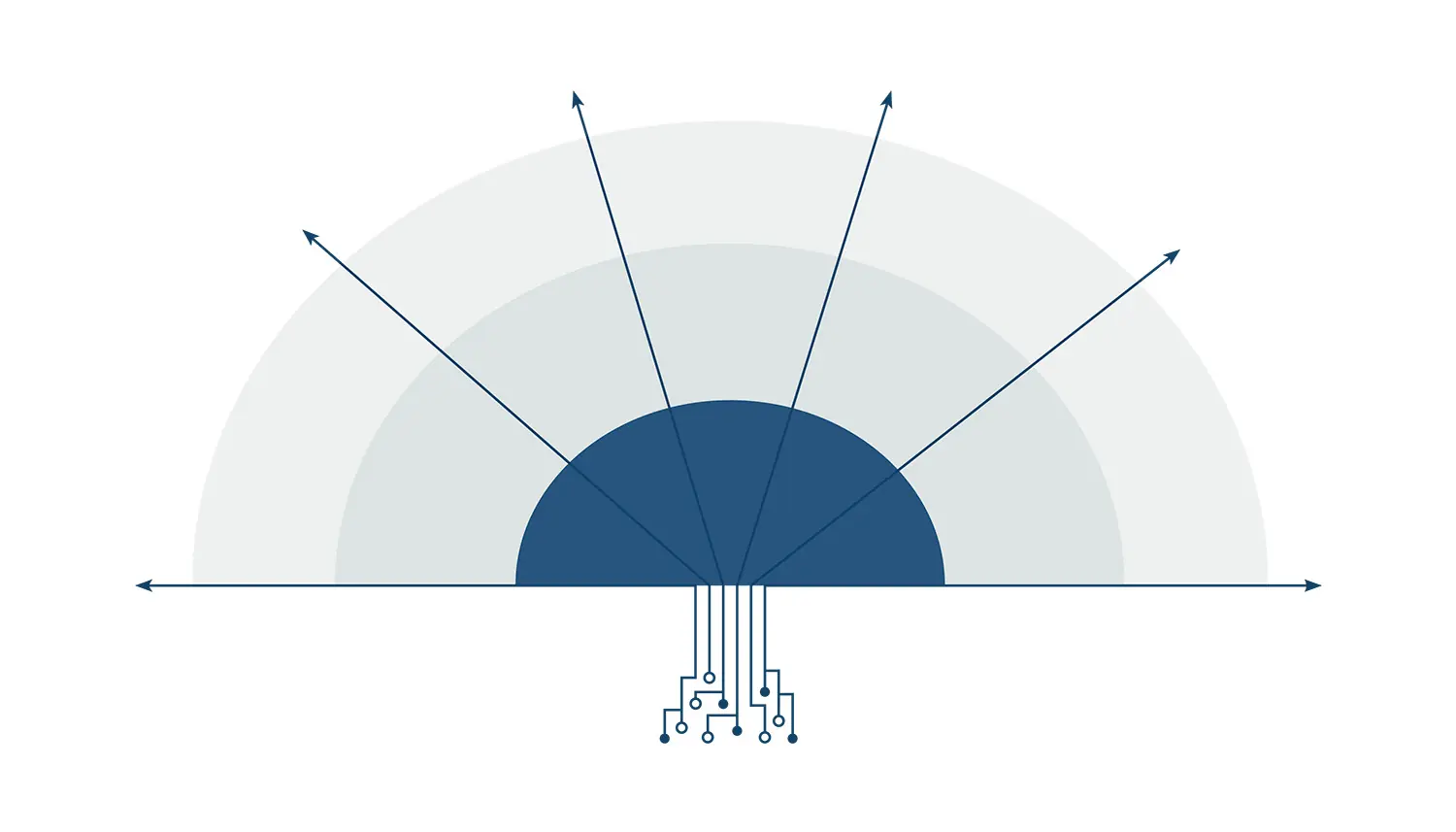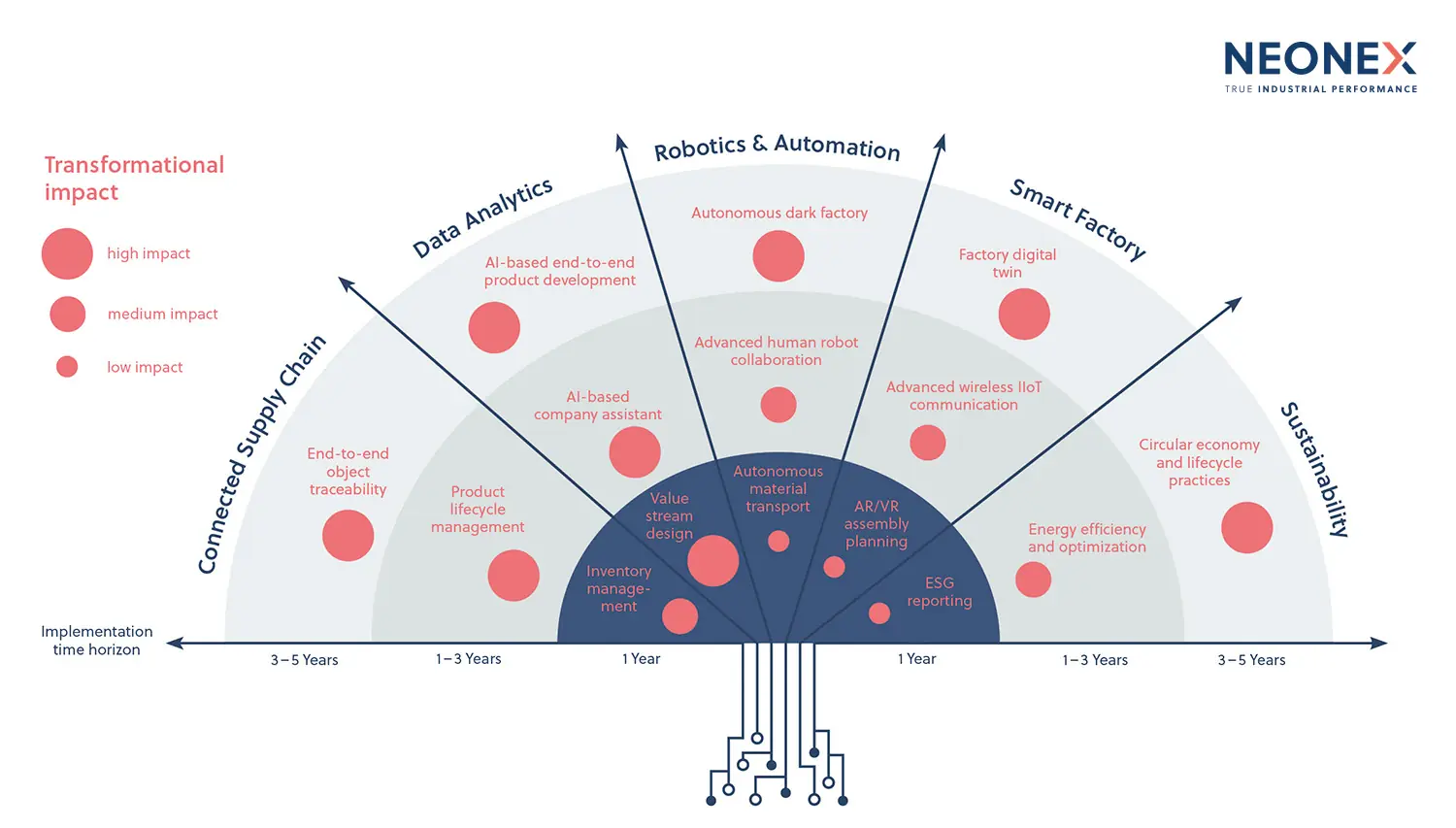NEONEX Industrial Trend Tree 2024
6. March 2024- Smart Factory Trends
- New Technologies

As we step into the year 2024, manufacturing companies find themselves at a critical juncture to address the challenges that lie ahead. While some industrial sectors are still recovering from the impact of the COVID-19 pandemic, ongoing global conflicts amplify persistent challenges, such as supply chain disruptions and volatile energy prices. These dynamics have initiated a trend, compelling the relocalization of manufacturing activities back into high-income countries. Furthermore, European businesses face formidable demographic challenges characterized by an aging population, a diminishing working-age demographic with prevalent skills shortages, an overall population decline, and escalating regional disparities.
Considering the aftermath of the COVID-19 pandemic, the complex challenges posed by global conflicts, and the profound demographic shifts, it becomes imperative for companies to undergo a transformative journey towards becoming highly digitalized and automated entities. However, the rapid development and frequent emergence of new trends make it challenging for businesses to identify trends of sustainable importance and assess their degree of maturity. This uncertainty underscores the need for companies to seek expert guidance in choosing trends to invest in and continually reassessing their strategies to stay at the forefront of industrial advancements.
The NEONEX Industrial Trend Tree 2024 aims to guide businesses in proactively shaping their future, ensuring resilience and competitiveness in the evolving landscape. Anchored by an illustrative graphic at its core, the report highlights the five most crucial trend branches, serving as a visual roadmap for strategically preparing businesses for 2024 and beyond.
Displayed above, the Industrial Trend Tree comprises five core trend branches arranged alphabetically from left to right. Each core trend branch features three key trends organized by their expected adoption timeline. The key trends – represented metaphorically as fruits on the branches – convey the anticipated implementation horizon for the widespread adoption of trends by companies seeking a competitive edge. The size of these fruits indicates the degree of transformational impact, distinguishing between trends with broad influence across the entire company and those with more localized effects within specific business model aspects.
This year’s core trend branches include Connected Supply Chain, Data Analytics, Robotics & Automation, Smart Factory, and Sustainability. The paper you can download below specifies the core trend branches and explains the arrangement of their included key trends. Fill out the form below to download the paper for free!
We've updated the Industrial Trend Tree for 2025. Click the link here to download the new edition.


